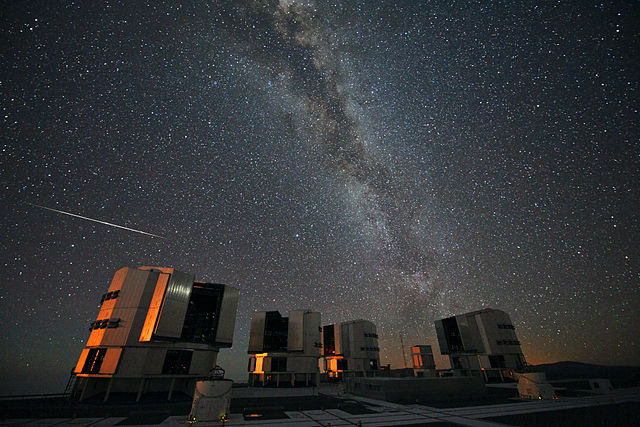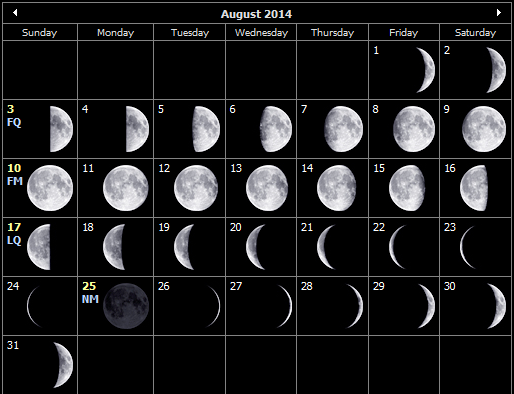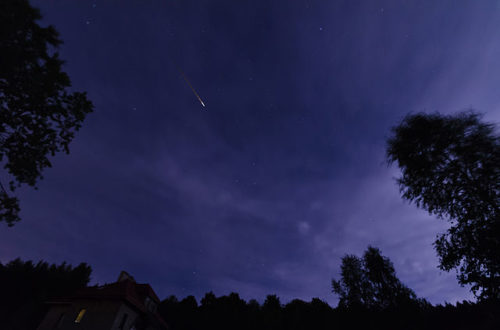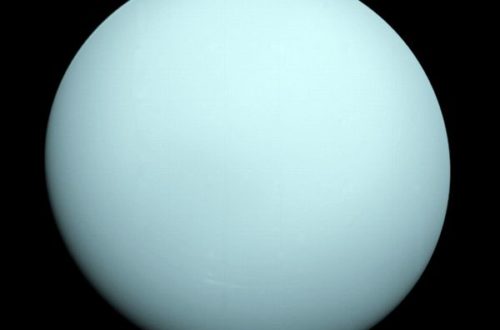Monthly Stargazing Calendar for August 2014

The 2010 Perseids over the VLT. Image credit: ESO/S. Guisard.
Looking for the August 2025 stargazing calendar?
Tonight on August 12 and on the morning of August 13 the Perseid meteor shower will peak. It is one of the best meteor showers to observe, producing up to 60 meteors per hour at its peak. Some meteors can also be seen from from July 17 to August 24. The waning gibbous moon will block out some of the meteors this year, but the Perseids are so bright and numerous that it should still be a good show. The meteor shower originates from debris produced by comet Swift-Tuttle, which was discovered in 1862. The meteors will radiate from the constellation Perseus, but can appear anywhere in the sky.
Would you like to be notified of stargazing events?

On August 18 we will witness the conjunction of Venus and Jupiter. Conjunctions are rare events where two or more celestial objects will appear extremely close together in the night sky. The two bright planets will come unusually close to each other, only a quarter of a degree, in the early morning sky. Also, the beehive cluster in the constellation Cancer will be only 1 degree away. This rare, double-planet event is definitely one not to miss. Look for the bright planets in the east just before sunrise.
On August 29 Neptune will be at opposition. The blue giant planet will be at its closest approach to Earth and its face will be fully illuminated by the Sun making it the best time to view and photograph Neptune. Due to its extreme distance from Earth, it will only appear as a tiny blue dot in all but the most powerful telescopes.
Moon phases
As you know, the moon has a big impact on the visibility of celestial bodies in the night sky. So here are the moon’s phases for this month:

Positions of the planets this month
Mercury: The closest planet to the Sun can be seen at dawn and dusk travelling across the constellation of Leo. This planet, being the closest to the Sun, will appear to move quickly in the night sky and its position will change in the following weeks.
Venus: The sister planet can be seen in the constellation of Cancer, not far from the planet Jupiter. Just like Mercury, Venus can only be seen at dawn and dusk.
Mars: The red planet can be seen between the constellations of Virgo and Libra, not far from the planet Saturn.
Jupiter: The gas giant is visible in the constellation of Cancer. Jupiter can easily be spotted with the naked eye, even in highly illuminated cities.
Saturn: The ringed giant can be seen with the naked eye in the constellation of Libra.
Uranus: The gas giant can be seen in the constellation of Pisces with the use of a telescope.
Neptune: The blue giant requires a telescope pointed in the constellation of Aquarius in order to be seen.
Major astronomical event next month
- September 23 – September Equinox.
See also:
- Previous month’s calendar: Stargazing Calendar for July 2014
- Next month’s calendar: Stargazing Calendar for September 2014
Would you like to receive similar articles by email?





